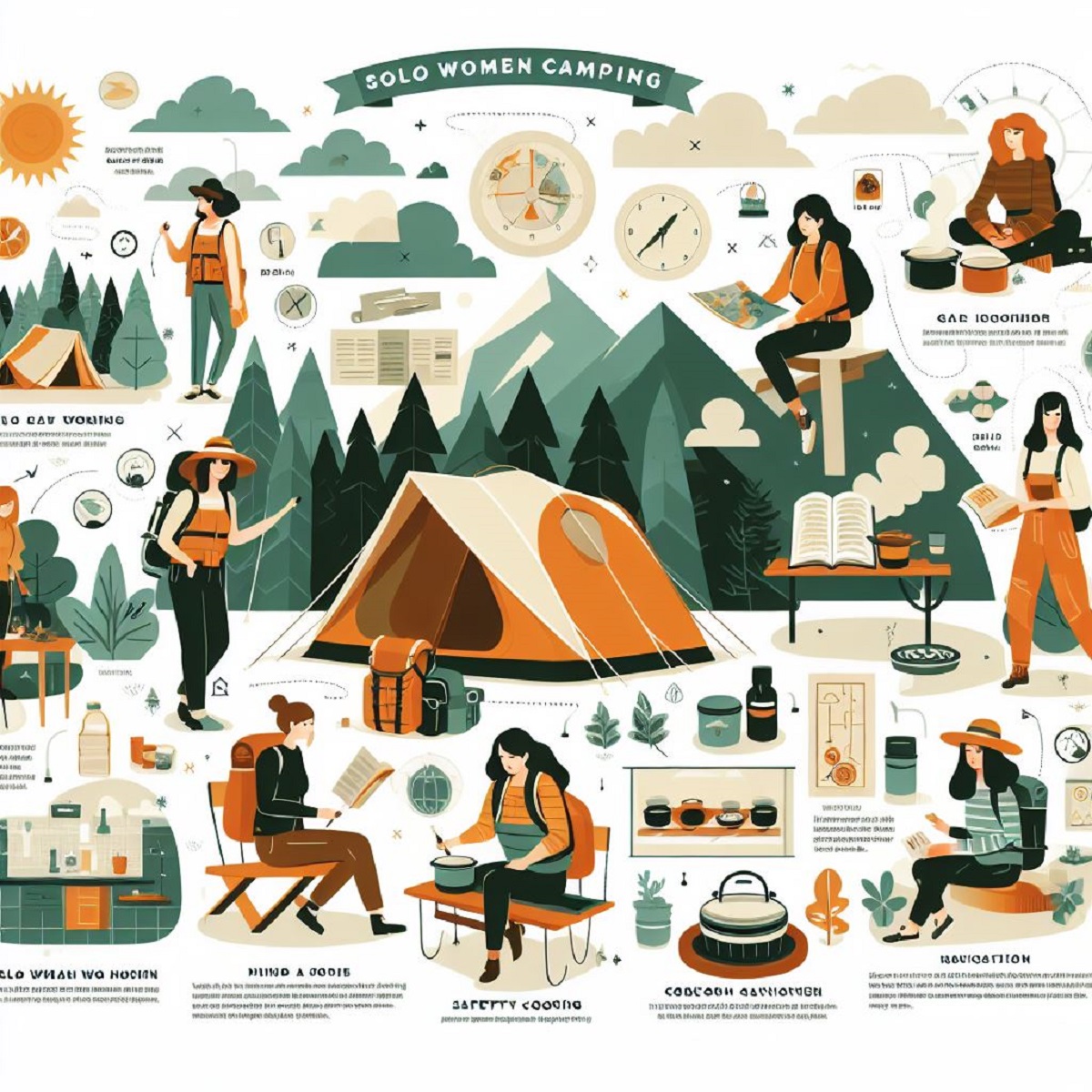Solo camping, while rewarding, can evoke feelings of vulnerability and uncertainty, especially for female campers. However, with practical tips and insights from experienced solo campers, you can enhance your safety and comfort while enjoying the serenity of the outdoors. Here’s a compilation of valuable advice and strategies shared by seasoned adventurers:
Key Takeaways:
- Campsite Selection: Choose campsites strategically, opting for locations near other campers or families to create a sense of security. Well-populated campgrounds often offer reassurance and support from fellow outdoor enthusiasts.
- Safety Measures: Carry essential safety gear such as bear spray, pepper spray, or an air horn to deter wildlife and potential threats from humans. Maintain situational awareness and trust your instincts to recognize and respond to any perceived risks.
- Communication and Preparedness: Inform trusted contacts of your camping plans and itinerary, including details of your location and expected return time. Consider investing in communication devices like GPS trackers or personal locator devices for added safety.
- Mental Wellness: Address feelings of fear or anxiety by engaging in calming activities like reading, listening to music, or practicing mindfulness techniques. Create a comforting environment within your campsite to promote relaxation and peace of mind.
Practical Strategies for Solo Camping Safety:
1. Campsite Selection and Security:
- Opt for campsites near families or other campers within close proximity to foster a sense of security and community.
- Use visual cues to create the illusion of companionship, such as setting up multiple chairs or hanging additional clothing items, to deter potential intruders.
2. Safety Gear and Preparedness:
- Carry essential safety equipment like bear spray, pepper spray, or an air horn for protection against wildlife and potential threats from humans.
- Consider sleeping in your vehicle for added security, ensuring easy access to safety gear and the ability to depart quickly if necessary.
3. Communication and Support:
- Share your camping plans and itinerary with trusted individuals, including details of your location and expected return time.
- Engage with fellow campers in the area, offering neighborly assistance and fostering a sense of community and mutual support.
4. Mental Wellness and Comfort:
- Address feelings of fear or anxiety by engaging in calming activities like reading, listening to music, or practicing mindfulness techniques.
- Create a comforting environment within your campsite with familiar belongings and routines to promote relaxation and peace of mind.
Insights from Experienced Solo Campers:
- Campsite Selection: Choose well-populated campgrounds or remote camping spots based on personal comfort levels and preferences for solitude or community.
- Safety Gear: Carry bear spray, pepper spray, or an air horn for protection against wildlife and potential threats, prioritizing non-lethal options for self-defense.
- Community Support: Engage with fellow campers and offer assistance or support to foster a sense of camaraderie and mutual care within the outdoor community.
Conclusion:
Solo camping offers a unique opportunity for self-discovery and adventure, but it’s essential to prioritize safety and comfort while embracing the wilderness. By implementing practical strategies and drawing from the experiences of seasoned solo campers, you can navigate the challenges of solo camping with confidence and enjoy the beauty of nature to the fullest. Remember to trust your instincts, stay prepared, and embrace the sense of freedom and empowerment that solo camping provides. Happy camping!















